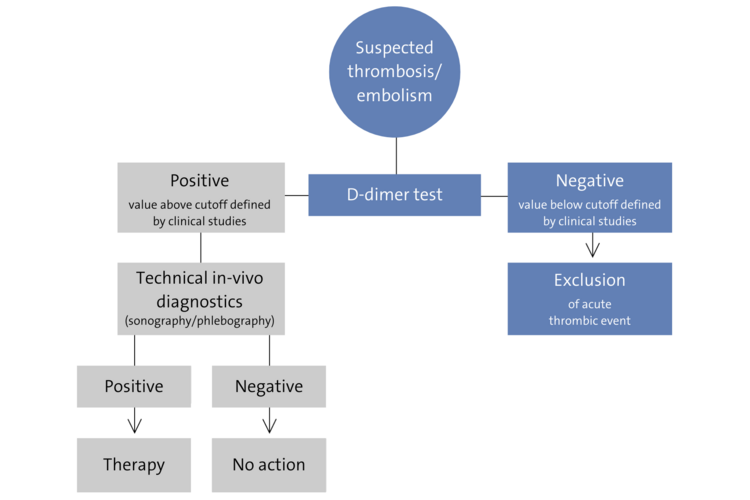Clinical relevance
During plasma coagulation soluble fibrin is generated. By degradation of cross-linked fibrin, characteristic products called D-dimers are released. Increased D-dimer levels indicate the activation of coagulation and fibrinolysis processes. Low levels of D-dimer are mainly used to exclude venous thromboembolism (VTE) such as deep vein thrombosis of the leg (DVT) and pulmonary embolism (PE).
Diagnostic value of D-dimer

- D-Dimer may be determined to exclude a suspected DVT or PE with levels below a specific cut-off value
- Since neither a reference method nor reference material are available, clinical studies are mandatory to define an assay-specific cut-off and calibrator values
- Several studies support the use of a cut-off value of 0.5 FEU (fibrinogen equivalent unit) µg/mL
- If D-dimer levels are above cut-off value, imaging techniques such as sonograhpy or phlebography are mandatory for a definitive diagnosis of VTE
- Specificity for DVT is variable and depends on patient population; adjusted cut-offs were suggested for e.g. elderly patients or for individuals with cancer

